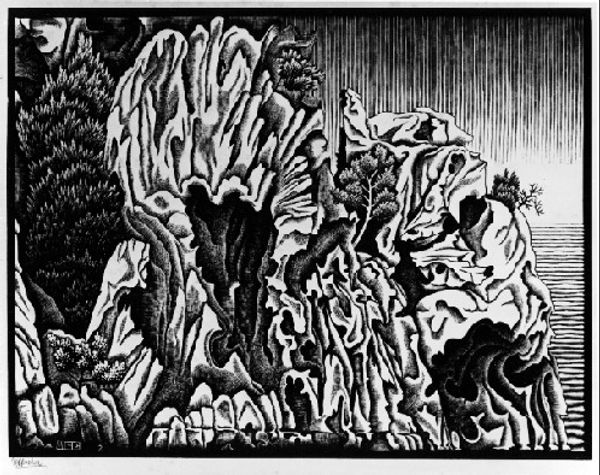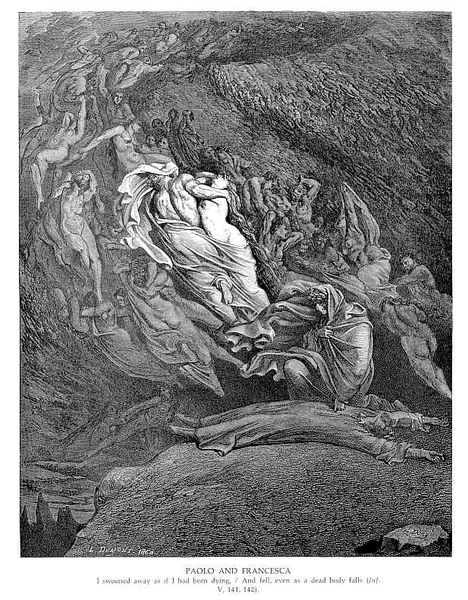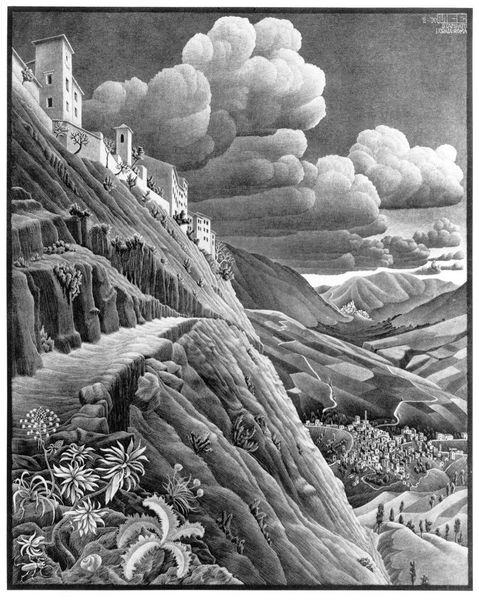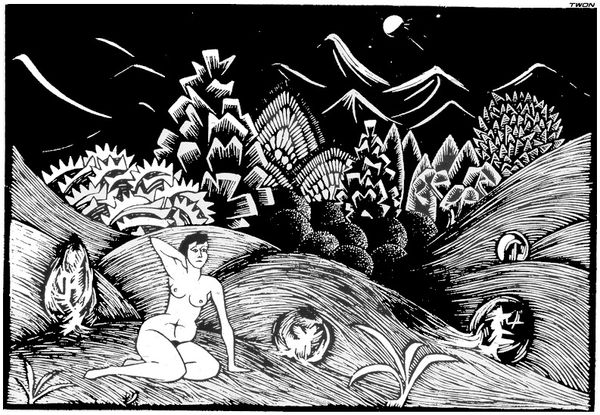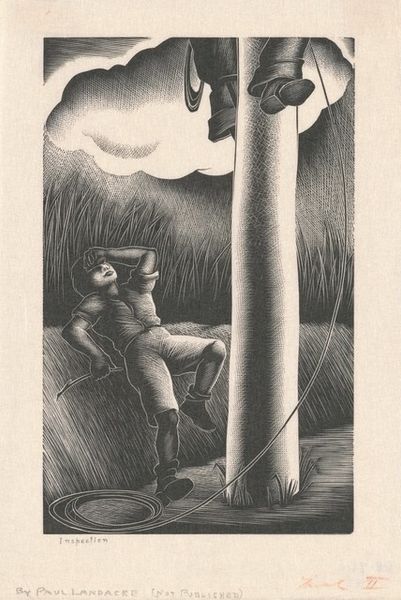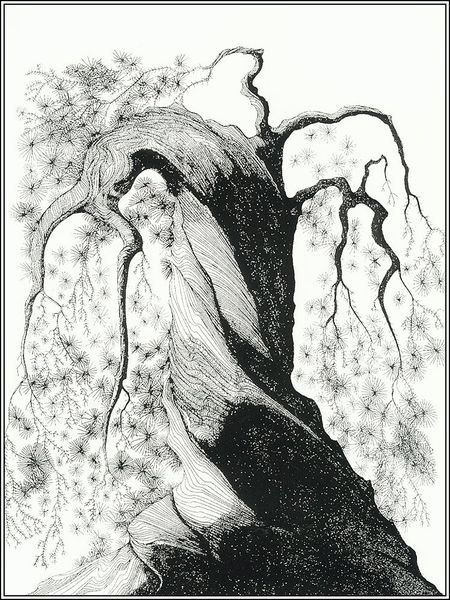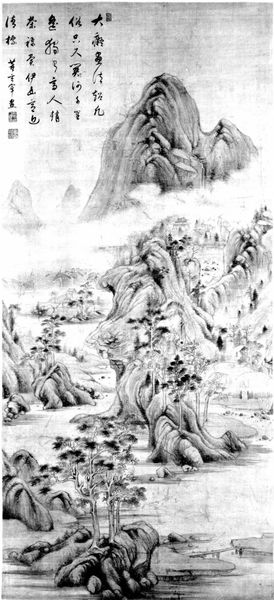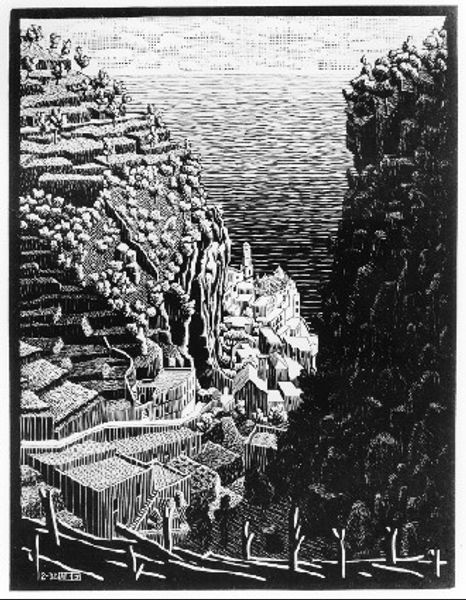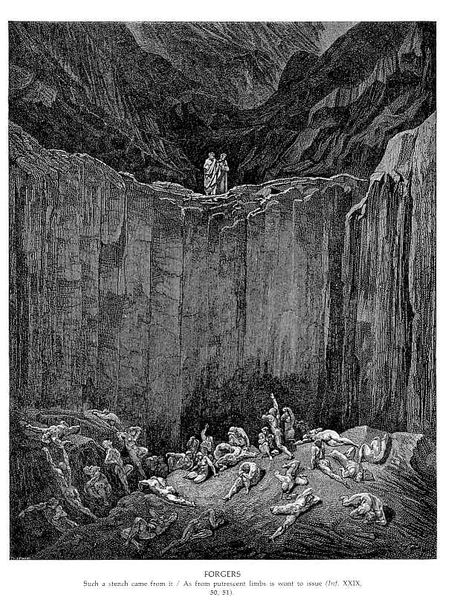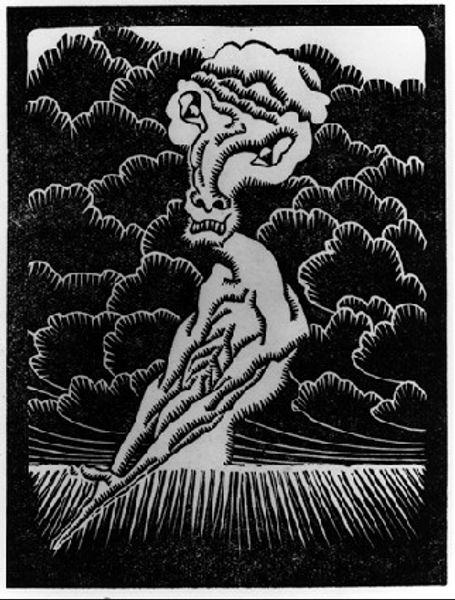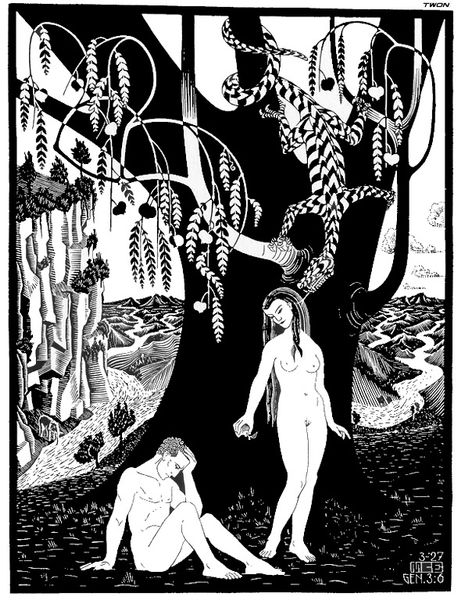
drawing, print, pen
#
drawing
# print
#
landscape
#
ocean
#
geometric
#
mountain
#
pen
#
realism
Copyright: M.C. Escher,Fair Use
Curator: Before us is M.C. Escher’s "Calanques de Piana," a print the artist completed in 1928, utilizing pen and ink on paper to depict a Corsican coastal landscape. Editor: Striking. My immediate impression is its textural intensity—the contrast between the crisp lines of the ocean and the densely packed, almost gothic rock formations. It's both inviting and forbidding. Curator: Interesting that you see the forbidding aspects so immediately. Escher made this while travelling in Italy and Corsica; his journeys to sun-drenched locales influenced a move toward landscape in his early work. The social context reveals a shift from his architectural fantasies toward observations of the natural world. Editor: Absolutely, and technically brilliant, no doubt. But this isn’t simply representational, is it? Note how he uses lines to create both volume and to flatten the perspective—disrupting expectations in subtle ways, especially in the interplay between the detailed foreground and simplified sky. Curator: Indeed. And look at the historical precedents—the sublime landscapes of Romanticism come to mind, particularly in its focus on nature's overwhelming power, here manifested through the craggy, almost grotesque rock faces that dominate the composition. This was also created between the World Wars, amid a rise of geopolitical instability, giving another layer of tension. Editor: You make an important point; however, Escher is controlling our perception and making us think about visual experience and about art in a different way by emphasizing geometrical patterns in natural forms, challenging our visual interpretation of it, isn't he? Curator: Certainly, though his interest in natural formations wasn't just about aesthetics or abstract form, but was also intrinsically connected to representing place at a particular historical juncture. This was a world changed by the first World War and growing global uncertainties. These concerns find their ways into artistic representations, even within something that appears purely landscape. Editor: I concede, a lovely blend of the formal with historical anxiety, perhaps. Now, I am seeing Escher's visual strategy also embodies the cultural turmoil of the time. A great artwork. Curator: Exactly! By considering both artistic skill and its place in history, we can more thoroughly grasp its many dimensions.
Comments
No comments
Be the first to comment and join the conversation on the ultimate creative platform.

